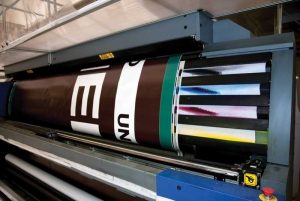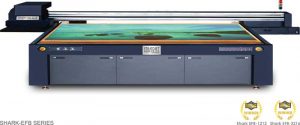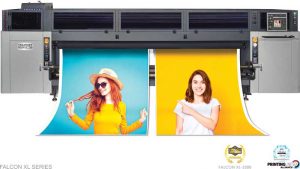
The wide-format printing market has seen significant growth, propelled by the emergence of new, up-and-coming ideas and applications. Photo © Moreno Soppelsa | Dreamstime.com
By Sohil Singh and Aditya Bhardwaj
Recently, the wide-format printing market has seen significant growth, propelled by the emergence of new, up-and-coming ideas and applications. As more industries see the potential of wide-format printing to add unique flair to their projects, its popularity continues to expand beyond just the advertising sphere. Customers are also demanding more customizable solutions amongst digital print offerings, which leaves a whole new space for print service providers (PSPs) to expand and diversify their current portfolios. What follows is a look at today’s trends in digital wide-format printing, as well as how PSPs can take advantage of their growing presence in the market.
Textile printing and soft signage
Texture in visual display has become an attractive alternative for many applications. Lately, it has come forth through fabric display elements, such as soft signage, and has begun to move on to more rigid substrates. Wood-grain texture is gaining more popularity in a variety of substrates, including expanded polyvinyl chloride (PVC) signboard, as it is application-friendly, durable, and visually appealing. It can be imaged using wide-format flatbed printers, equipped to achieve an engraved look, fabricated into structures which double as signage, and endure the elements for many years.
The architecture industry is seeing the benefits of using wide-format printing and varied textured substrates to customize interiors or exteriors in building projects—think rustic lodge interiors with custom-imaged components, such as wayfinding, or structural or signage-related common room elements.
Textile printing has also continued its impact on the visual communications market. Whether it is soft signage, direct-to-garment, direct-to-textile, or anything else in this space, customers are interested in these specialty applications, along with the same quick turnaround times they see in other segments. Even as print providers aim to minimize their turnaround times, they should expect customers to want more custom and personalized options.
Further, trends are emerging across the supply chain to better support direct-to-fabric printing, particularly soft signage. From equipment manufacturers to ink producers and fabric providers, the industry is significantly changing how print buyers look at point-of-purchase (POP) signage. All aspects of textile-based printing—from decor to fashion—will continue to grow exponentially, as these applications create new opportunities to generate revenue for print providers and new product options
for customers.

Today, print service providers (PSPs) are introducing newer print technologies like ultraviolet (UV) direct-to-substrate printing, as well as expanded digital finishing capabilities. With these comes the potential to explore new revenue streams. Images courtesy Stratojet USA
Leveraging new printing technologies
Today, PSPs are introducing newer print technologies like ultraviolet (UV) direct-to-substrate printing, as well as expanded digital finishing capabilities. As a result, there are now more opportunities than ever to explore both short-run and prototype packaging applications as new potential revenue streams. For many companies producing signage and graphics, this creates an opportunity to offer and deliver the applications various business-to-business customers are already looking to attain. With several other printing technologies, there is an increasing demand for shorter runs and customization in packaging. This serves as a new business opportunity for PSPs who have experience with short runs and tight turnarounds, allowing them to empower both small and established businesses to approach their packaging requirements at a more localized and unique level.
Wide-format equipment, coupled with the right finishing capabilities, can provide printers with the opportunity to achieve promotional short-run packaging opportunities. Promotional short-run packaging is a sector that packaging printers are generally not able to compete with, due to their long-run equipment and long lead times. Printers who can position themselves as experts in this area will find new opportunities with local manufacturers and discover this is a growing segment of the packaging market wide-format printers can utilize.
Lastly, as technology and demand move fast in the market, it is anticipated the types and colours of inks available will also continue to evolve. Some companies have already expanded from traditional four-colour printing to include spot colours for everything from metallics to neon. In addition to delivering eye-catching, unique splashes of colour, these new inks will provide opportunities for greater colour fidelity.






